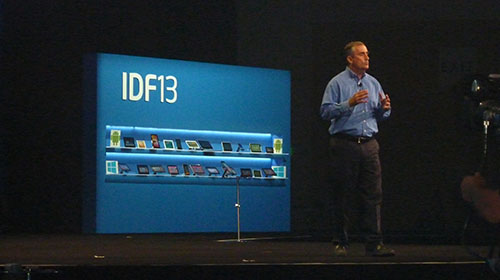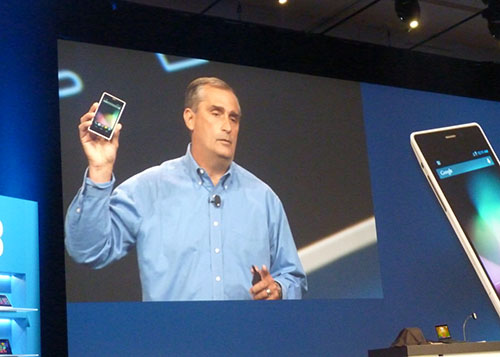Lead in every segment of computing
New Intel chief executive officer, Brian M. Krzanich, kicked off his first Intel Developer Forum (IDF) keynote address by explaining a simple truth about cutting-edge computing: we are moving from a CPU-only silicon world to system-on-chip (SoC) architectures for all manner of products.

Krzanich firmly believes Intel is ideally placed to take advantage of forthcoming SoCs, citing world-leading manufacturing as a key advantage over the competition. Bullish from the outset, Krzanich said Intel's strategy is to lead in every possible segment - from datacentres to ultra-low-power devices. Bold words indeed.
PC reinventing itself
The CEO also believes the PC is in the process of reinventing itself, as the 4th Generation Core architecture, codenamed Haswell, enables sleeker, slimmer, fanless laptops through the use of energy-efficient Y-series chips. The PC's not about boring beige boxes any more, clearly. He also showed a demo laptop running the next-generation 'Broadwell' architecture, explaining that the 14nm process and general architecture improvements enable a 30 per cent decrease in power when compared to equivalent Haswell chips. Broadwell laptops will be shipping early next year, he commented.
Tablets
Krzanich also believes that Intel can, and will, be strong in tablets. 'We have assets and technologies that nobody else can bring to the market,' he said, and explained that Intel doesn't have to be synonymous with expensive hardware; he expects sub-$100 tablets this holiday season. We'll certainly be hearing more about Bay Trail-based tablets throughout the show.
Smartphones

For his next trick, the CEO demonstrated a Merrifield-based smartphone with built-in LTE. Merrifield is the phone version of the Bay Trail SoC used in tablets. Krzanich said that such phones will be available at the end of this year.
Quark family of SoCs
Throwing a curve ball, Krzanich announced the Quark family of SoCs. These tiny chips are fully synthesisable, meaning that companies requiring small industrial chips can use their IP and build their technology on them, much like how ARM operates its lower-end designs that power many of the world's microcontrollers. Just 20 per cent the size of the latest Atoms and sipping on 10 per cent of their power, it's Intel getting serious about milliwatt computing and making a silicon play for the next 'x' billion devices. It's not yet clear how the manufacturing side will work; Intel has historically built chips solely for its business.
For us, Krzanich's keynote demonstrates one aspect above all else - Intel is a manufacturing powerhouse first and foremost. Already strong for servers and client computing, Intel wants the IA architecture to be the dominant platform for all devices, no matter how lean their power requirements. Will this happen next year? No. Will this happen within 10 years? Who knows. Are you watching closely, ARM?















